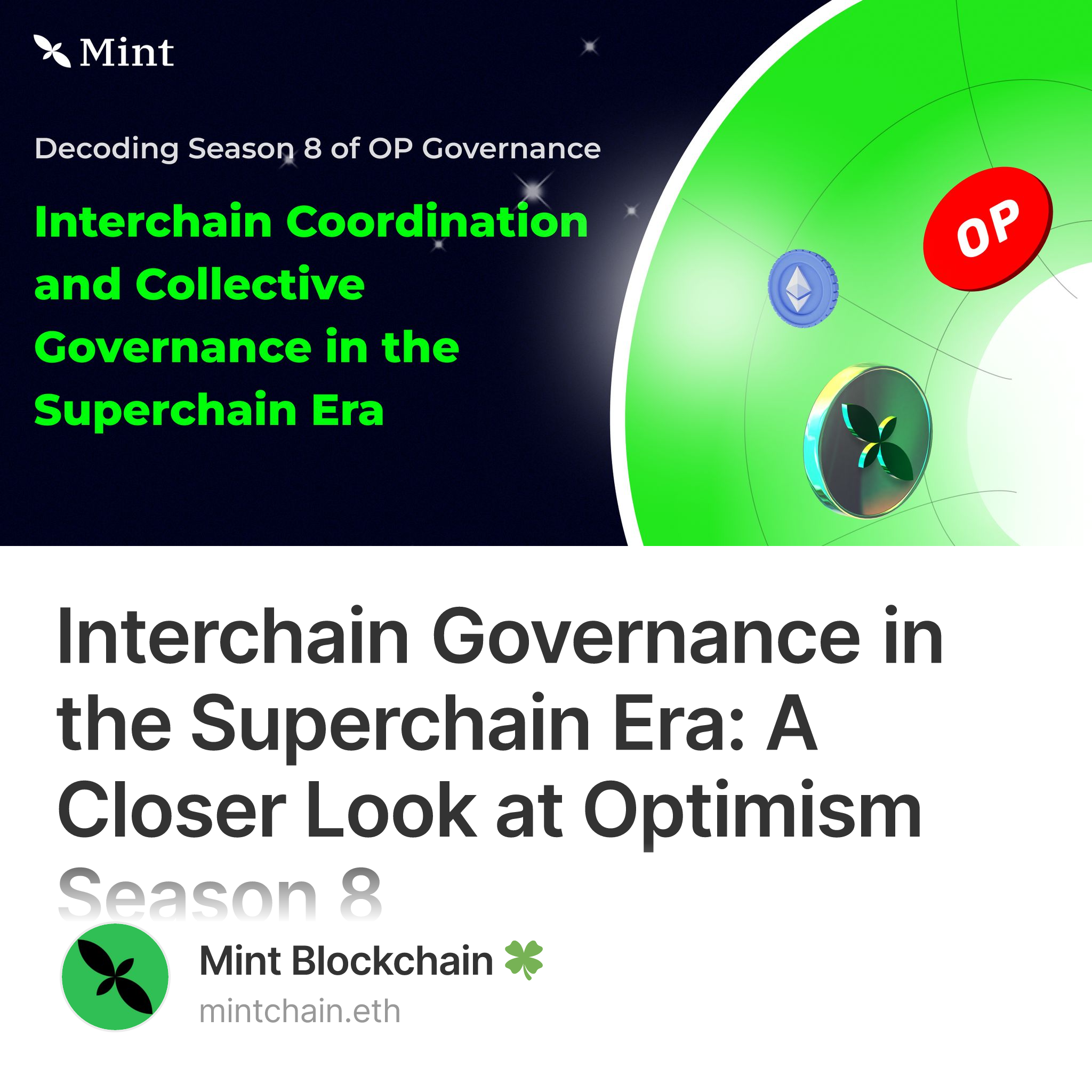In June 2025, the Optimism Collective officially launched Season 8 (S8) of its governance framework. More than just an optimization of existing rules, this marks a systemic upgrade rooted in three years of on-chain governance experimentation. At its core, S8 aims to introduce a new stakeholder model, a standardized citizenship system, and low-overhead participation mechanisms to support a more collaborative and resilient interchain governance structure.
As the Superchain architecture takes shape, governance is shifting away from single-chain token voting toward a more inclusive, stable, and adaptable ecosystem-wide model. For member chains, this represents not just a paradigm shift — but a living experiment in collective governance, protocol design, and long-term coordination.
Redefining Platform Accountability
From token-holder voting to the Citizens’ House to retroactive public goods funding, Optimism’s governance journey has consistently focused on one key question: how can we prevent governance from becoming a centralized power structure serving narrow interests?
Season 8 introduces three key mechanisms to address the long-standing issue of “platform risk” in Web3: • Multi-Stakeholder Governance: Governance must be accountable not only to token holders, but also to end users, developers, and member chains — the ecosystem’s actual contributors. • Open & Verifiable Citizenship: Combining on-chain contribution data with identity verification to set fair and accessible participation thresholds. • Minimized Participation Burden: Mechanisms like “Optimistic Approval” lower friction, encouraging meaningful participation from those with a stake in outcomes.
This shift marks the evolution of Superchain governance from platform-centric incentive structures to shared responsibility and cross-chain consensus.
Interchain Governance Takes Shape
S8 represents the first institutional step toward multi-chain governance within the Superchain framework. Member chains are now formally recognized as governance participants — alongside token holders, developers, and users — with clearly defined rights and responsibilities.
The four stakeholder categories are:
-
Token Holders: Economic risk-bearers and the traditional governance base.
-
End Users: Fee payers directly affected by protocol upgrades.
-
Developers: Builders whose applications rely on long-term platform stability.
-
Member Chains: Infrastructure providers bearing operational costs, now with formal governance input.
This structure acknowledges that chains are no longer just neutral infrastructure — they are active agents in protocol evolution and governance.
Standardizing On-Chain Citizenship
S8 upgrades the Citizens’ House by combining identity verification with contribution-based eligibility. Governance participation now hinges on verifiable on-chain behavior, not abstract status.
Three citizenship paths:
-
Users: Must meet activity thresholds and pass Sybil-resistant checks (e.g., World ID, Passport).
-
Developers: Top 100 DApps ranked by gas usage are invited.
-
Member Chains: Top 15 chains by ecosystem revenue gain automatic entry.
This design grounds governance rights in measurable, meaningful participation.
Lowering Barriers with Optimistic Approval
To reduce governance fatigue and increase efficiency, Season 8 introduces “Optimistic Approval”: proposals are automatically approved unless actively vetoed.
Two primary contexts:
-
Budget Proposals
-
Submitted by: Budget Committees
-
Vetoed by: Any stakeholder group
-
-
Protocol Upgrades
-
Proposed by: Core development teams
-
Reviewed by: Technical Advisory Boards
-
Vetoed by: All stakeholder groups
-
A dynamic veto threshold ensures the system adapts to community sentiment, promoting meaningful engagement at key decision points without requiring constant oversight.
Superchain as a Coordinated Multichain Entity
Season 8 governance reflects a foundational shift: from managing a single platform to coordinating a decentralized network of autonomous chains. The new system aims to:
-
Eliminate single points of trust
-
Prevent stakeholder monopolies
-
Enable sustainable ecosystem-wide coordination
The result is a governance model concerned not just with protocol efficiency, but with long-term legitimacy, accountability, and interchain collaboration. Superchain governance is moving beyond platform rule-making toward systemic, participatory coordination.
Mint, as an active Superchain participant, is committed to exploring how these new governance standards can support decentralization across Layer2 ecosystems. For chains like Mint, aligning with S8 principles is no longer optional — it's a shared responsibility.
The Future of Governance
In a modular, multi-chain world — potentially populated by autonomous agents and evolving protocols — governance must become structurally capable of navigating complexity.
True decentralization does not mean the absence of governance, but rather shared, verifiable responsibility across many actors.
Season 8 is just the beginning. Whether its prototype becomes a sustainable foundation for long-term Superchain coordination will depend on the continued involvement of users, developers, member chains, and public goods advocates alike.
Mint will be there — contributing, validating, and building what comes next.

